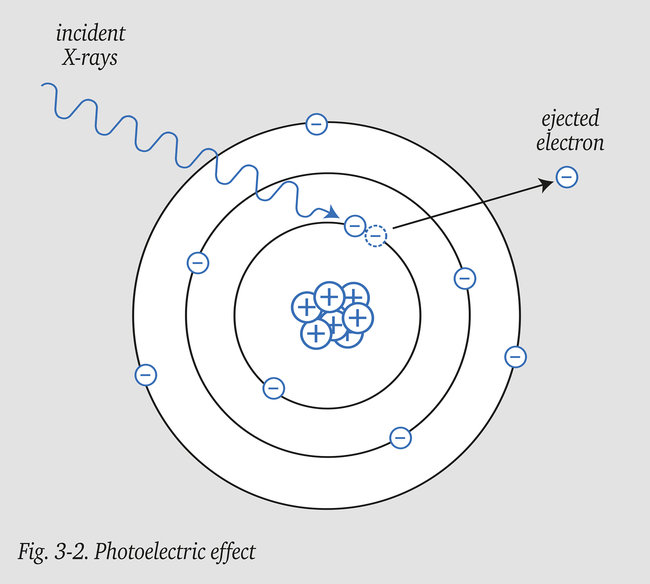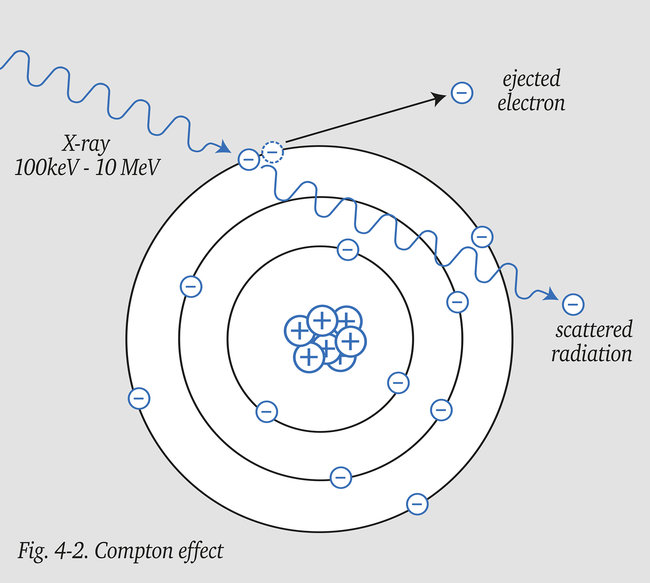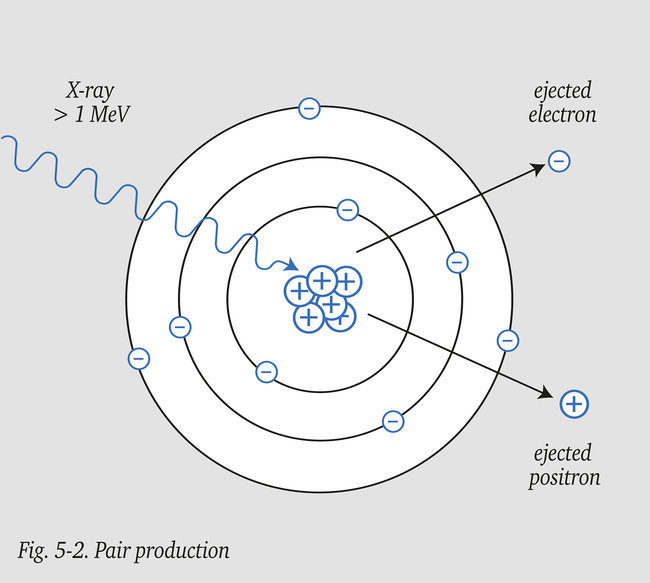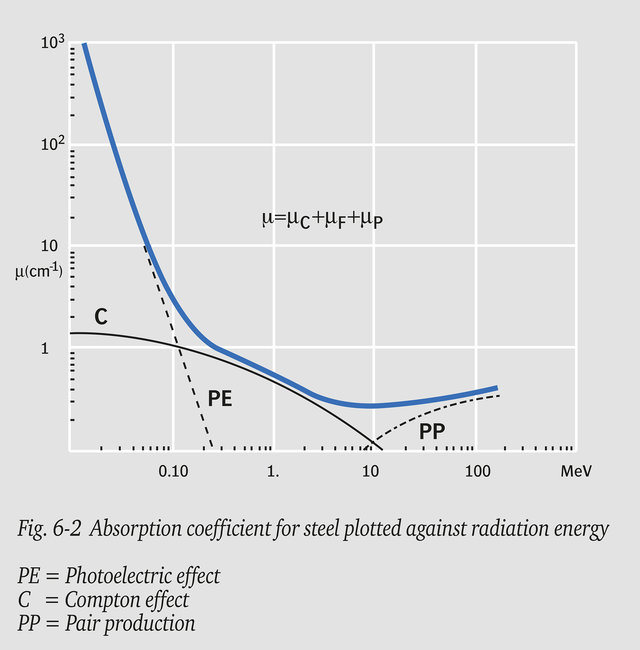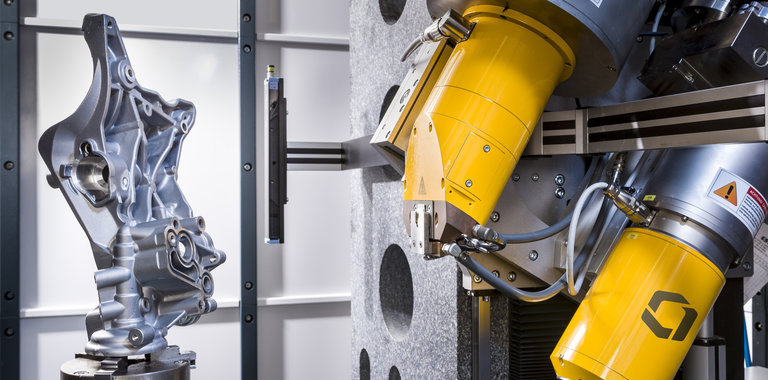
What is determining the absorption and scattering of radiation?
The reduction in radiation intensity on penetrating a material is determined by the following reactions :
1. Photoelectric effect
2. Compton effect
3. Pair production
Which of these reactions will predominate depends on the energy of the incident radiation and the material irradiated.
Photoelectric effect When X-rays of relatively low energy pass through a material and a photon collides with an atom of this material, the total energy of this photon can be used to eject an electron from the inner shells of the atom, as figure 3-2 illustrates. This phenomenon is called the photoelectric effect and occurs in the object, in the film and in any filters used.
Compton effect With higher X-ray energies (100 keV to 10 MeV), the interaction of photons with free or weakly bonded electrons of the outer atom layers causes part of the energy to be transferred to these electrons which are then ejected, as illustrated i figure 4-2. At the same time the photons will be deflected from the initial angle of incidence and emerge from the collision as radiation of reduced energy, scattered in all directions including backward, known as “back-scatter”, see in a later section. In this energy band, the absorption of radiation is mainly due to the Compton effect and less so to the photoelectric effect.
Pair production The formation of ion pairs, see figure 5-2, only occurs at very high energy levels (above 1 MeV). High-energy photons can cause an interaction with the nucleus of the atom involved in the collision. The energy of the photon is here used to eject an electron (e-) and a positron (e+).
Total absorption/attenuation The total linear absorption or attenuation of X-rays is a combination of the three absorption processes described above, in which the primary X-ray energy changes to a lower form of energy. Secondary X-ray energy arises of a different wavelength and a different direction of travel. Some of this secondary (scattered) radiation does not contribute to radiographic image forming and may cause loss of image quality through blurring or fog. The contribution of the various causes of X-ray absorption to the total linear absorption coefficient (μ) for steel plotted against radiation energy, are shown in figure 6-2.


